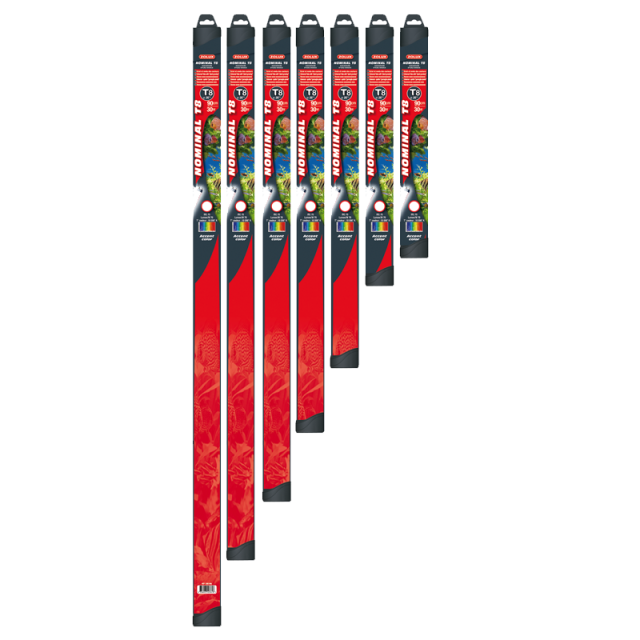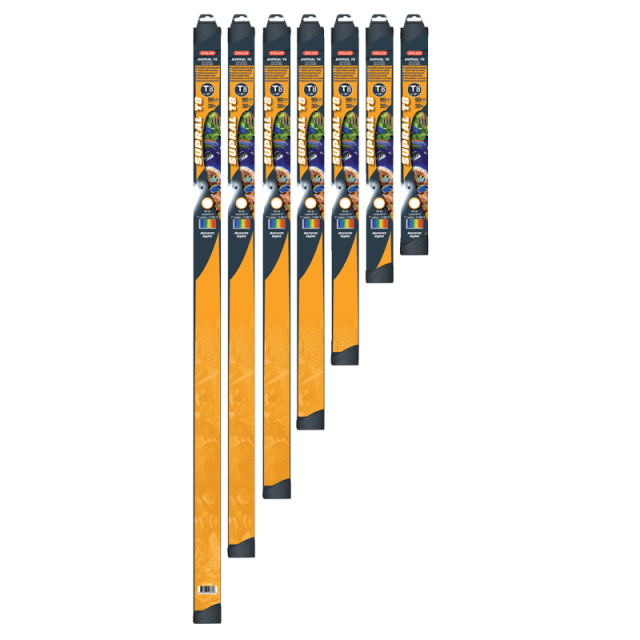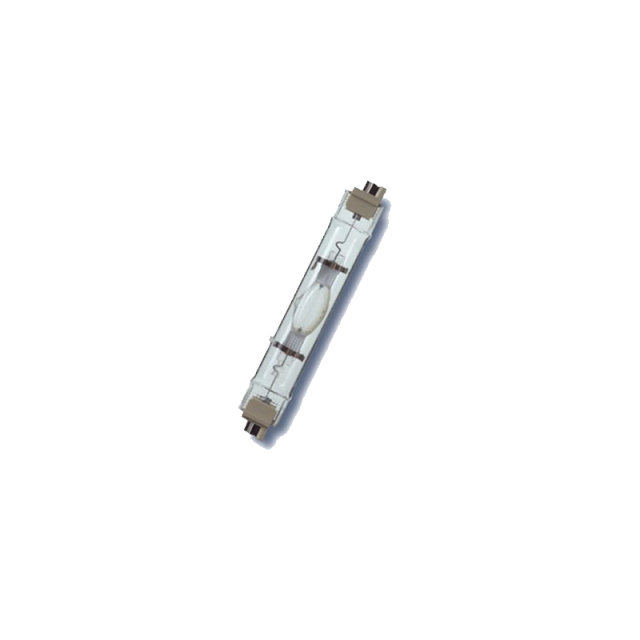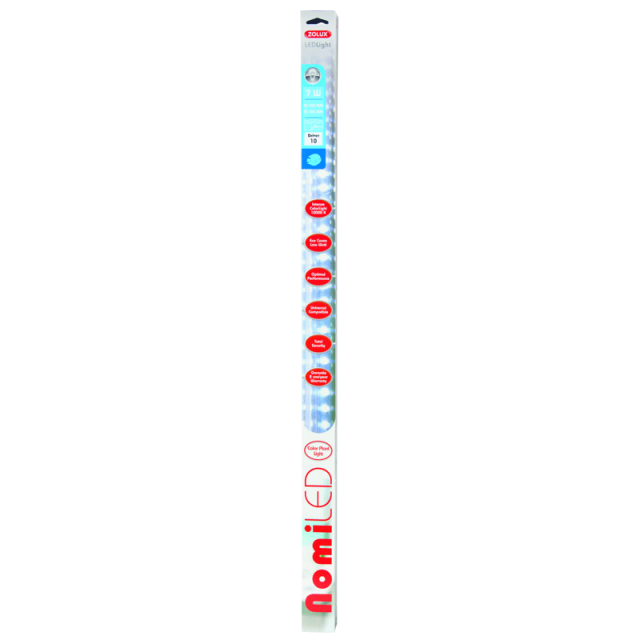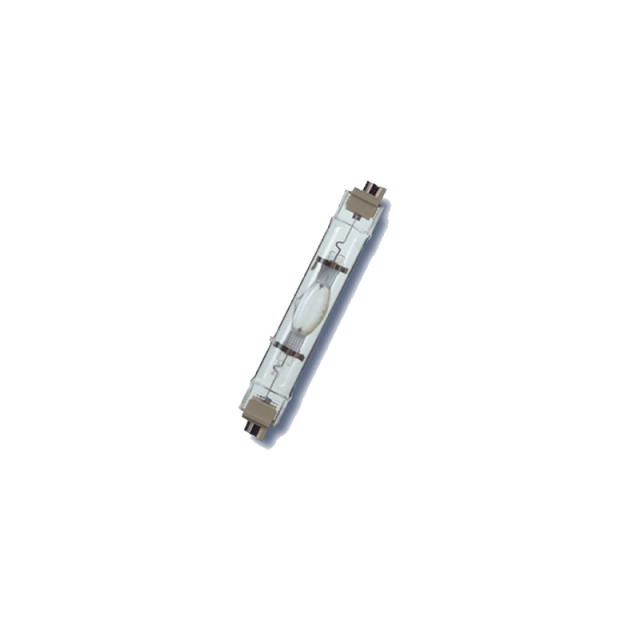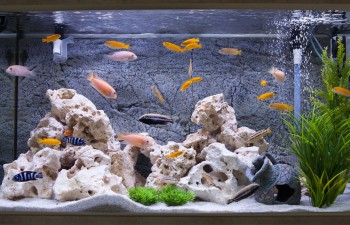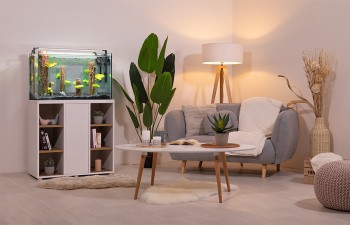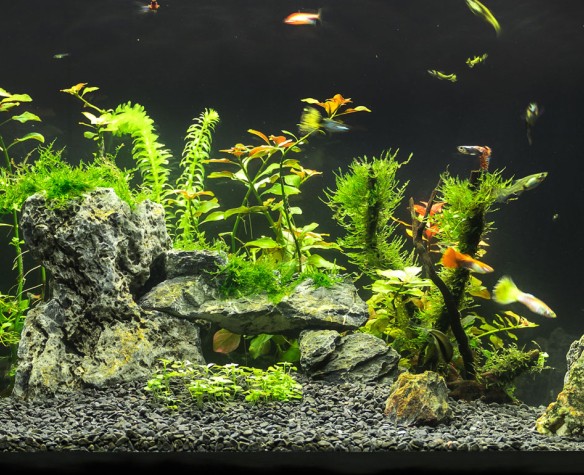
Aquarium lighting
Understanding the Role of Lighting
A necessity to provide light for the aquarium and its residents, lighting is also an essential element to the ecological balance of the tank – plant growth and, indirectly, the well-being and harmonious development of the fish that live there by maintaining optimum oxygen levels in the aquarium.
Light is a vital element for plants – they need it to perform photosynthesis and grow. During photosynthesis, the energy absorbed allows plants to capture the carbon dioxide released by fish (CO2) and turn it into pure oxygen (O2) which is immediately diluted and returned to the water.
However, light management in an aquarium has to adhere to specific rules that need to be mastered:
An aquarium with too much light is not desireable because it generates an excess of photosynthesis in the plant life, excessive growth in the plants, uncontrolled and detrimentaal growth of parasitic algae on the sides of the aquarium, on other plants and on decorations. Next comes a progressive degradation of the chemical and biological properties of the environment, making for an unhappy aquarium that is difficult to maintain and has an uncertain environmental balance
So it is important to understand the role of lighting and manage it properly. Depending on the type of tube and the brightness of the room, between 8 and 12 hours per day is the recommended amount of in-tank lighting. Avoid direct sunlight or a location near a bright window.
Different Light Sources
Sunlight
This is the most natural, complete and economical source of light. However, it is not used in the aquarium because, depending on the location, time, season and weather, natural light is never reliably the same, or regular, and its intensity can not be measured or scheduled.
It is therefore advisable to avoid sunny rooms at the risk of overexposure, imbalance and an explosion of parasitic algae in the tank. Your aquarium would be better in a more dimly lit location, a small shaded sitting area for example, a quiet place where the tank will be better seen, and better able to take advantage of its lighting.
Fluorescent
Powered by a ballast (transformer), fluorescent lighting is the most common type of lighting used aquariums. A fluorescent lamp is a glass tube whose inner wall has been impregnated with a very specific substance (type of powder) and then closed, with an electrode on each side, and then filled with a rare pressurized gas; they are efficient, low-energy and put off very little heat. When voltage is applied, the gas releases energy in the form of light, with a specific spectrum that is directly determined by the powder that was applied during manufacture (the type of fluorescent powder modifies the spectrum of the tube).
So the various types of tubes available make it possible to adapt the lighting to your various types of aquariums and habitats (freshwater aquariums, saltwater, African Cichlids, a reef aquarium or mostly plant-based tank).
There are primarily 2 sizes of fluorescent tubes available on the market: T8 and T5.
T8 tubes: standard fluorescent tube (Ø 26 mm), the most commonly used to date.
Tube T5: a new type of small diameter tube (Ø 16 mm), often used by aquarium manufacturers in recent years. More powerful and with a higher output than the T8 tube, the T5 tube works without a starter, consumes less energy and lasts longer.
Notice: T5 tubes must be paired with a specific “T5” electronic ballast system.
For ideal light management, lighting tubes must be selected depending on the type of aquarium; then an automatic timer should be used so that the lighting cycles are regular and operate without outside input.
For ideal light management, lighting tubes must be selected depending on the type of aquarium; then an automatic timer should be used so that the lighting cycles are regular and operate without outside input.
Notes for aficionados:
Some technical characteristics can help you better understand the type of tube to use:
- Colour temperature: a characteristic that describes the colour of the light emitted by the light source. It is expressed in degrees Kelvin (K). A colour temperature of 3000° K corresponds to a yellowish-orange light (a warm tone), a colour temperature of 10000° K corresponds to a bluish-violet light (a cold tone). Sunlight has a temperature of about 6500° K.
- CRI (colour rendering index): an indication of the spectrum emitted with respect to that of the sun at zenith. The closer the index of the tube gets to 100, the more the light is visually close to sunlight. A good quality tube should in principle have a CRI greater than 80 (except for specific types of lighting, such as “supra-actinic”, which is meant to promote the development of corals).
-
Lumen/Watt: This is a technical specification which shows the relationship between the luminous output (lumens) and power consumption (Watts). A good fluorescent tube has a light intensity of about 70 lumens/W (with the exception of special lighting such as “super-actinic” tubes intended for the development of corals).
-
Spectrum: this is an accurate visual representation of the breakdown of the radiation emitted by a light source. This breakdown makes it possible to measure the intensity of the radiation emitted at each wavelength of the solar spectrum, from infrared (760 nm) to ultraviolet (390 nm). Viewing the emission spectrum provides complete information about the radiation source and we can evaluate if it has the characteristics necessary for the development of the aquarium and its residents and and the wavelengths required for the plants to conduct photosynthesis.
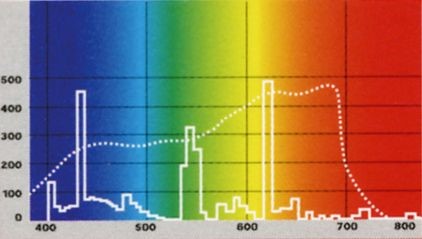
Example of the light spectrum of a ZOLUX® Nominal ‘T8 tube
Range of ZOLUX® fluorescent tubes:
To simplify the delicate management of aquarium lighting, ZOLUX® has developed a compact, efficient and comprehensive range of fluorescent tubes for all types of aquariums, in the two existing formats available on the market: T8 (Ø 26 mm) and T5 (Ø 16 mm)*.
*Reminder: the new T5 format tube is a tube with a very high light intensity (150% higher than T8) and operates exclusively on a system with T5-specific electronic ballast.
NOMINAL’T8 ET NOMINAL’T5*
A universal fluorescent tube designed to highlight the colours of the fish and promote plant growth. A broad-spectrum tube for all types of tanks. Powerful light, soft and warm.
(The spectrum position was designed to effectively curb the development of parasitic algae)
SUPRAL’T8 ET SUPRAL’T5 *
A fluorescent tube that recreates tropical colours and intended to promote light penetration, plant growth and the development of corals. A powerful tube with exceptional brightness primarily developed for large freshwater aquariums, and saltwater and reef tanks.
(Recommended pairing: SUPRAL® and NOMINAL® tubes for freshwater aquariums, SUPRAL® and ACTIREEF® tubes for saltwater tanks.)
Fluorescent Tubes
FLUORESCENT TUBES
Adjustable reflector facets, for T8 and T5 fluorescent tubes:
- Greatly amplifies the light intensity of aquariums and terrariums
- Concentrates and enhances the luminous flux
- Stimulates plant growth
- Enhances the natural colours of animals. The addition of a light reflector in a tank that previously did not have on increases the efficiency with a gain of up to 100% of the luminous flux previously being lost – a gain in both light and energy. (See ZOLUX® Reflector Multi'Flash)
HQL LAMPS
An HQL (mercury vapour) lamp is a discharge lamp. Often used as a wall mounted spot, or hung over a large, open plant-based tank, they are primarily intended for freshwater aquariums. With a relatively warm colour temperature (3000 - 4200° K) and a CRI of 71, HQL lamps are particularly preferred for promoting plant growth and provide excellent light output. An HQL lamp must be positioned between 50 and 60 cm from the water surface. The most common are wattages are 80 and 125 W.
LED LIGHTING
The technology of the future, the light-emitting diode (LED) is a new source of electronically generated light which is currently experiencing very rapid and extraordinary development in the world of lighting and light fixtures. Only recently available for small Nano-type aquariums, the cost is still fairly high for large LED units and they do not yet completely meet the photosynthetic needs of plants and reef organisms. Nevertheless, LED technology is promising and has some major advantages: The life of an LED is about 50,000 hours, or about 12 years of normal use (both economically and ecologically beneficial over time). The technical ability to design a specific spectrum for each type of aquarium or habitat through the management and combination of various colours of LEDs. The spectral composition could be made adjustable on demand, making it possible to recreate the various lighting effects of Nature's light cycles (dawn, sunlight, twilight, moonlit night, etc.). LED is a low power-consumption technology, and can operate on just 12 volts – this reduces energy consumption and enhances safety with a SELV (Safety Extra Low Voltage) power supply voltage. LED technology has a bright future ahead of it!
HQI LAMPS
An HQI (metal halide) lamp is a halogen discharge lamp. They are quite powerful and are most popular in saltwater or freshwater aquariums that are especially deep and tall (60 cm of water or more). With a spectrum close to natural sunlight and high brightness, HQI lamps are frequently used in saltwater reef aquariums for optimal development of corals and invertebrates. Often coupled with blue supra-actinic tubes, this type of lighting combination plays a major role in the metabolic development and calcification of corals. (See ZOLUX® ACTI-REEF® tubes). With an output of 150 to 450 W for aquarium use, the colour temperature of an HQI lamp can be between 7000 and 15,000° K (Kelvin) depending on the various brands and models.

